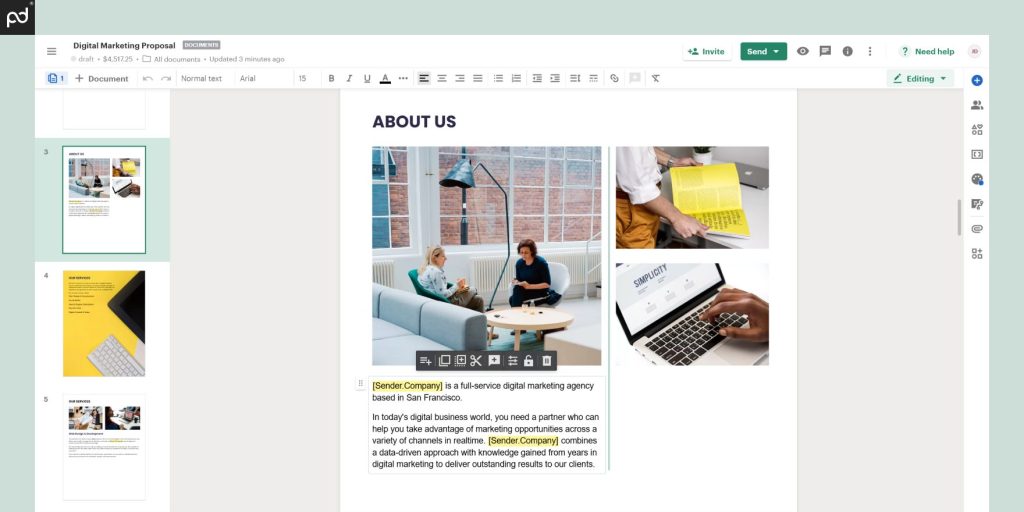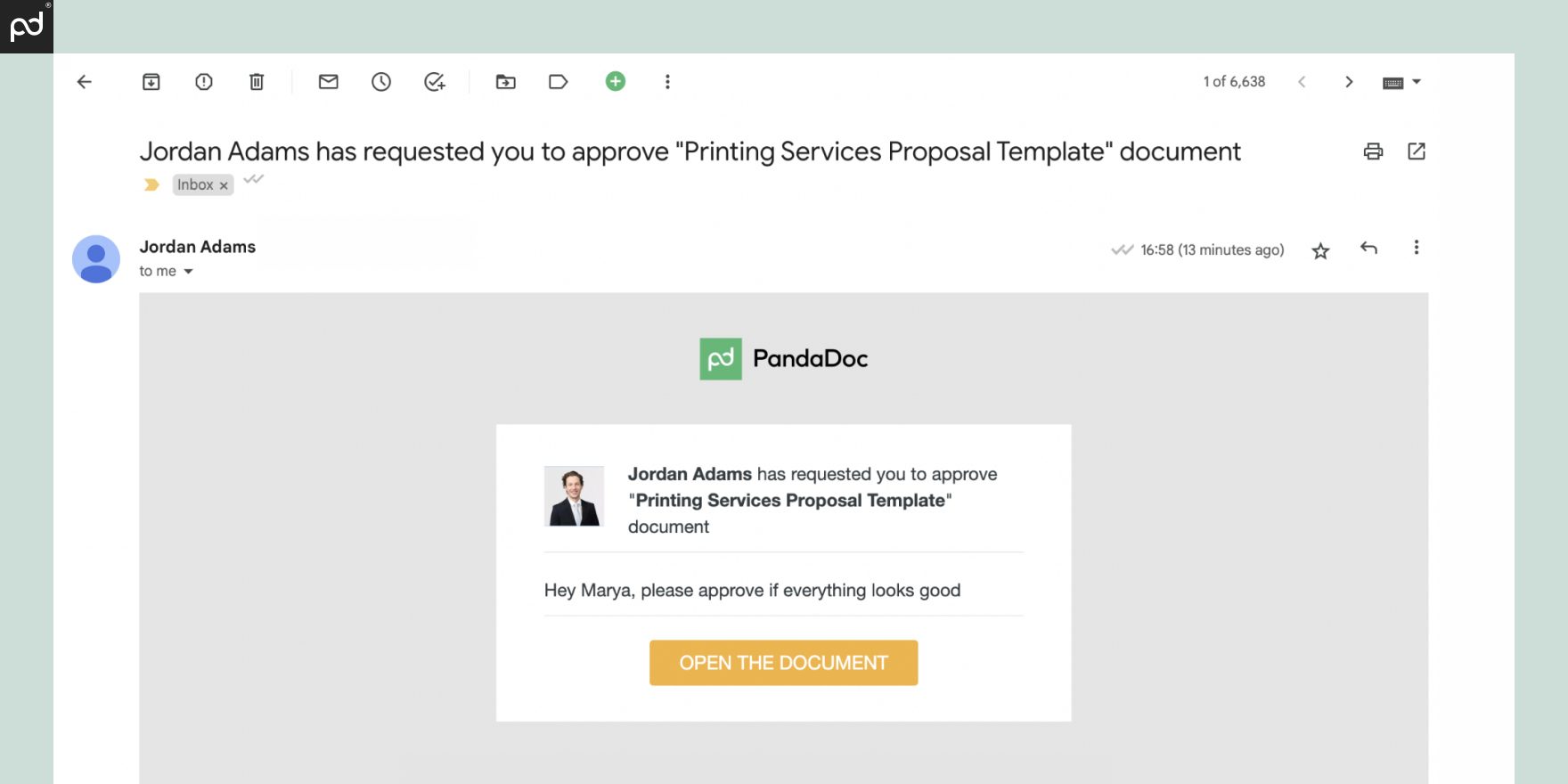When a client wants to go into a full-scale, good-faith collaboration with a manufacturer, a legally binding agreement is the unskippable first step.
This type of agreement outlines the terms of the cooperation, including costs, personnel, and timelines, to ensure the process goes smoothly.
Both original design manufacturers (ODMs) and original equipment manufacturers (OEMs) need license agreements when providing manufacturing services for private clients or public agencies.
Tag along as we explore how to create an enforceable, ironclad manufacturing agreement for any project.
Key takeaways
- A manufacturing agreement is a legally binding document that outlines the contractual terms of cooperation between a client and a manufacturer.
- Boilerplate as well as custom clauses are some of the key components of a legally binding manufacturing agreement in terms of validity and enforceability.
- Draft the contract terms based on the initial proposal and use change orders to account for amendments to the agreement.
Essential components of a manufacturing agreement
Any agreement with a manufacturer should contain standard boilerplate clauses such as indemnification, termination, dispute resolution, payment terms, and governing law.
But here are some manufacturing-specific provisions to include in the contract:
- Delivery of products
- Inventory risk sharing
- Acceptance and rejections
- Acts of employees (for each party)
- Quality control and inspection
- New products (notice and refusal)
- Time period for the return of materials
- Representations, warranties, and covenants
- Ownership of equipment and documentation
- Foreign registrations (for international collaborative projects)
Other components of manufacturing agreements include the scope of work, executive summary, liquidation, damages, intellectual property rights, arbitration, compliance, waiver of liability, and severability.
You can adjust the contract terms to cover specific project provisions, keeping in mind OSHA, ISO, and other industry regulations.
Best practices for creating manufacturing agreements
Regardless of the product and the industry, here are some best practices to guarantee upholding quality standards when crafting manufacturing agreements.
Send out a stellar proposal
The first step in manufacturing procurement is to respond to a request for proposal (RFP) through private invitation or public tendering.
For your proposal to be considered superior, you must include all necessary product design, documentation, and certifications down to the letter, as requested by the client.
Let’s say you want to respond to an RFP for the delivery of electronic chips for a government agency. Your proposal should contain the following:
- Bill of materials (BOM) or bill of quantities (BOQ)
- Printed circuit board (PCB) specification
- Mechanical drawings
- Security clearance
- Source of raw materials, etc.
These documents, loaded in with your properly structured proposal, will distinguish your submission and increase the chances of procurement.
And here’s where dedicated proposal software like PandaDoc lends a hand.
Streamlined proposal generation with pre-built templates, customizable drag-and-drop content, and easy CRM data import — these features ensure your proposals look professional and polished as you hit “send.”

Negotiate the terms
Once the client accepts your proposal, get on a call with them to discuss the minutiae before penning an agreement.
Why? Because this will zero out any ambiguity and cut down on the redlining process significantly.
For instance, clients can ask a metalworks company to carry out internal quality control inspections before shipping the product.
This will delegate responsibility for the final product quality and include additional costs for purchase orders.
Other things to discuss during contract negotiations include delivery timelines, costs, subcontractors, payment schedules, restrictions or special conditions, and exclusivity.
Add all the necessary provisions
This sounds like a no-brainer, but most companies get into trouble by omitting vital clauses such as force majeure and arbitration from their manufacturing contracts.
In 2006, Total Source Molders sued Great American Bottle Works for non-payment of workmanship because they refused to honor contractual agreements inherited after a merger.
In response to the filing, the Iowa Court of Appeals forced Great American Bottle Works to pay for the products since they were made exclusively for them.
Another common scenario for manufacturers involved in China is how to navigate Chinese regulatory bodies like CIETAC. Your goods could get stuck in limbo if this regulator has an issue with the contract.
The lesson here? Always encapsulate every agreed-upon term in the manufacturing agreement and get a lawyer to review the terms in alignment with applicable laws.
To protect your company’s confidential information, make sure the contract contains a non-disclosure agreement (NDA). Establish cases of material breach that could lead to the termination of this agreement.
Account for standards and quality control
Your agreement should reflect the acceptable standards for testing and machining manufactured products.
Some manufacturing standards across different industries include the following:
- ISO 9001: Quality Management Systems
- IPC-A-610: Acceptability of Electronic Assemblies
- Restriction of Hazardous Substances (RoHS)
- ISO 14001: Environmental Management
- Registration, Evaluation, Authorization, and Restriction of Chemicals (REACH)
Why are these standards necessary? They ensure uniform quality for every product and level the playing field for consumers and manufacturers of all stripes.
And most importantly, these standards prevent outsourcing to other contractors — disincentivizing the temptation to cut corners and prioritize profits over practicality and usability.
If you ignore this vital provision, get ready for possible fines, wasted business days, and a warehouse full of worthless goods.
Speed up the process using automated contract creation
Solidifying the agreement on time leaves space to get to the manufacturing process. That’s why you need to speed up the contract production process.
Platforms like PandaDoc contain templates for manufacturing contracts that require minimal changes, sparing you the need to generate the agreement from scratch.
For projects that require standardized, industry-specific agreements, download the unedited copy and fill it in using the document editor to guarantee conformance.
With automated approvals and payment integration, parties to the agreement can speed up negotiations, billing, and invoicing to get the manufacturing project started.
Armored vehicle manufacturer Invaco doubled its close rate by switching to PandaDoc’s contract management solution.
Similarly, Metalworks company Vallen Distribution also reduced the time spent on creating proposals by 75% using the platform’s seamless integrations.
Draft and review the agreement
Once everything is set, it is time to put the contract in black and white. Here are the steps to follow when drafting a manufacturing agreement:
- Choose the fitting template for your contract manufacturing agreement.
- Edit the provisions of this agreement to outline each party’s obligations.
- Add the necessary clauses and terms of this agreement.
- Specify the effective date and delivery date.
- Embed headings, text, and signature fields in the document. Add your company’s logo or stamp.
- For smaller projects, add payment gateways to the agreement.
- Assign the required fields to the signatories. They’ll receive notifications.
- Send a copy of the contract via link.
- Implement all the agreed-upon changes to the document. Use version history to revert to old versions, if necessary.
- Turn on audit trail and notifications to track user activity and follow up.
- Forward the final copy to your legal team to confirm compliance by law as well as any applicable local, national, and international regulations.
- Sign the final agreement using an electronic signature tool.
- Save the file to your document repository and get to work!
Create manufacturing agreements that are built to last
You need a manufacturing agreement to avoid fines and protect your interests when working with OEMs and ODMs.
Ensure the agreement for manufacturing goods contains clear, unambiguous terms as well as provisions to cover other common or specific concerns.
To speed up the process of drafting, signing, and negotiating agreements with manufacturers, choose an automated contract management solution.
Want to start creating enforceable manufacturing agreements? Reach out to us right away.
Disclaimer
PandaDoc is not a law firm, or a substitute for an attorney or law firm. This page is not intended to and does not provide legal advice. Should you have legal questions on the validity of e-signatures or digital signatures and the enforceability thereof, please consult with an attorney or law firm. Use of PandaDoc services are governed by our Terms of Use and Privacy Policy.





